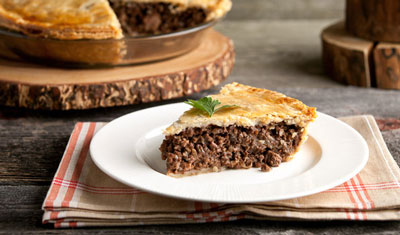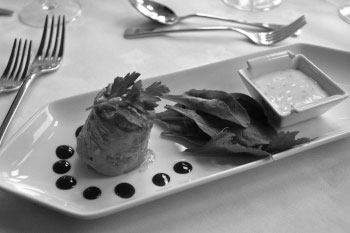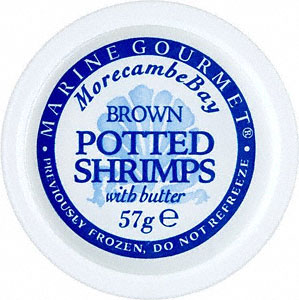An Appreciation, with modest reservations, of The New York Times, embedding a review of Flavour by Ruby Tandoh.
1. Telling truth to power and tweaking its tiger bully’s tail.
Falsehoods and lies. Those words now, for the first time, appear on the front page of The New York Times to describe the salient proclivities of an American presidential administration. In the past the paper of record has reported the contentions of the powerful without comment, and allowed readers to sort fact from folly, but the mendacity of Trump and his cronies is so breathtaking that the Times believed it had no responsible choice but to break with a tradition of restraint.

britishfoodinamerica does not ordinarily break into the political dialogue (not at any time later than the long eighteenth century anyway) but the cacophonous chaos of this presidency is so pervasive that we have had no choice but to note that the ethical and moral horrors of this strange new world touch us all.
bfia applauds The New York Times not only for its principles but also for its bravery. By now it should surprise nobody that Trump is a bigoted vulgarian bent upon vilifying and punishing perceived enemies.
The Times also has taken some subtler swipes at the bigotry of Trump. On 26 January, and earlier online, as Trump was alienating an entire nation by issuing his executive order to build a wasteful, inflammatory and useless wall on the southern border of the United States, the lead on the front page of the Times food section covered a Mexican chef, Geraldo Gonzalez, specializing in traditional moles at his restaurant in Chinatown. During the same week the Times ran a lengthy story on the reinvention of Pujol, “Mexico’s most celebrated restaurant” by its gifted owner and chef, Enrique Olvera. Coincidence? We hope not.
2. Resurgent respect for a forgotten food culture.
Something else of interest has been percolating through the pages of the Times food section, something unrelated to the advent of a loathsome political order (or disorder), something of particular interest to bfia. It is the incremental inception of interest in British food, until now the target only of slings and butt of jokes at the paper of record.
As recently as our Winter 2016 Number, we were compelled to add Eric Asimov, a wine columnist at the Times, for repeating the canard that the British not only disdain seasoning and spice but also share a national obsession with obliterating their own palates by swilling Scotch instead of wine with dinner. At the same time, however, other columnists have been taking a different tack.
On the subject of tourtière, the distinctive savory pie of Quebec and Atlantic Canada, Sam Sifton rectified a prevalent misperception. Conventional wisdom holds that the pie emerges solely from the French culinary canon, but as often seems the case, conventional wisdom turns out in fact not to be so wise.
On 7 December 2016, Sifton cited David McMillan in “A French Canadian Christmas Carol” to call “tourtière an example of ‘the cuisine of the occupied,’ food that is French by way of the British, who took Quebec in 1759.” McMillan goes on to explain why the origin of tourtière cannot be French: “Show me where in France they serve ketchup with a meat pie…. Cinnamon? Clove? Parisiens would gasp: C’est bizarre!”

And bizarre it would be in France, but seasonings of cinnamon and clove, as well as allspice, cayenne, mace, nutmeg and white pepper, themselves other outliers from the French savory system, have been bedrock seasonings for British meat pies and other savory dishes since the dawn of the long eighteenth century. And so Sifton seasons his tourtière not only with cinnamon and clove, but also with allspice, nutmeg and white pepper. McMillan might have added that any savory pie itself, other, arguably, than quiche, which really does not count, is alien to traditional French foodways.
Tourtière provides an instructive example of the hidden prevalence of British foodways throughout North America. “Year-round,” the Francophile Quebec chef Julian Armstrong writes in Made in Quebec: A Culinary Journey (New York 2014) without recognizing the irony, “the tourtière is the most-sold ready-made dish in Quebec food stores.”
3. Maybe someone gave them the Dickens.
Perhaps the three spirits from A Christmas Carol infiltrated the HVAC system at Times headquarters during the holidays. On 22 December Melissa Clark followed Sifton online with “Butter and Shrimp Make Holiday Magic.” In common with her former colleague Mark Bittman, who failed to include a single British preparation in his encyclopedia of global recipes, she is hardly a culinary Anglophile. To be fair, Bittman has confessed a fondness for traditional British devils, fast, easy, pungent and in sum wonderful as they are, in the pages of the Times, but that is about as far as he has gone.
Clark is an avowed skeptic when it comes to British food, as the introduction to “Holiday Magic” demonstrates. “Before I ever tucked into a dish of potted shrimp,” she admits, “I’d always imagined it to be the kind of thing a British vicar might be offered when he stopped to call on a pair of elderly sisters for tea. Wholesome and nourishing, but not at all sexy.”

If this kind of thing emerged from the keyboard of a male writer the cultural police would storm the pages of the Times en masse to engulf its ‘comments’ function with fulmination. On reflection that might not be bad. The onslaught of enraged readers might cause the entire Times website to crash, and when the reason emerged could give a fillip of publicity, however double edged, to the British food tradition.
At the very least Clark’s stereotype of arid asexuality demonstrates a profound ignorance of British foodways which, although to be expected, remains dispiriting. Potted shrimp is one of the few of many traditional potted foods never, quite, to have disappeared from fashion, a timeless mainstay of upscale British fish houses and dining rooms at the clubs of St. James’s, which latter to be fair may not quite radiate eroticism either.
Clark may have come late and with reluctance to potted shrimp but she has embraced the dish with the zeal of a convert and, unfortunately, a false analogy. “My first taste, at a seafood restaurant in London,” she confesses, “threw that idea,” that potted shrimp are dreary,
“on its head. The tiny pink shrimp were succulent and plump, bursting with brininess. Even better, they were coated in golden butter--not melted, but semifirm at room temperature--which turned velvety when plopped on the hot toast served alongside.”
At the risk of pedantry, it is difficult not to wonder where Clark has encountered butter that was not golden, or note that toast in Britain is nearly never served hot.
Clark found “that from my American perspective,” the potted shrimp she tried in London “was a bit like a lobster roll.” This also raises a brow. From my own American perspective, from someone who cooks and eats potted shrimp, and eats lobster rolls, potted shrimp bears scant resemblance to a lobster roll. Cold lobster rolls rely on mayonnaise, hot ones on drawn butter, but potted shrimp cures the shellfish in spiced clarified butter instead, as she does note, either at room temperature as Clark found or, just as commonly, served cold.

She also misapprehends the traditional seasonings and adds a few dissonant ones to her own variation on the dish, although her prose makes it unclear just what she believes those seasonings should be. “Traditionally,” she maintains, “a bit of mace, a hint of pepper and a trace of anchovy suffice. In my recipe I use all three…. ”
Does Clark believe that all of the putative trinity, or only one or some of them, traditionally season potted shrimp? And does she adhere to the cliché that English food peradventure must have been seasoned with timidity? If so she is mistaken. Sometimes the seasoning for potted shrimp may be robust, but if you are lucky enough to catch hold of some tiny brown Morcambe Bay shrimp then their delicacy would be overwhelmed by too much of anything, the way jotting Tabasco all over caviar would obliterate its flavor. Anchovy is not always an additive, although the mace is essential, and the pepper may be white or--get ready--cayenne. So much for the cult of the bland.
Clark adds the cayenne, considering it an innovation, along with garlic and thyme and, because she wants her potted shrimp to resemble a lobster roll (but why?), also adds celery seed. This jumble not only creates dissonance, but also misunderstands the point of potting. If potting traditionally preserves, and Clark recognizes that it does, then the garlic and thyme defeat the preservative purpose: Unlike dry seasonings they will rot within the binding of butter. But potting also concentrates flavor, ideally of the substance potted, whether shrimp or crab or beef or ham or cheese. These interlopers, especially the garlic, mask the principal flavor in a way the traditional seasonings do not. The celery seed is just wrong for a pot.
Despite these reservations we should be grateful to Clark for bringing something otherwise unknown to the attention of Americans, and she does supply some sound advice, if in another bout of uncertain prose, for potting shrimp:
“With modern refrigeration [but as opposed to prewar refrigeration?], you no longer need to clarify butter, which removes its water content, to improve its preserving abilities. And so you may think you can skip that step here. You can, but you shouldn’t. With its smooth, satiny texture, the clarified butter cap [but the surface of the cap can crunch, while the butter also forms a medium for the shrimp] is an elegant contrast to the soft shrimp [and, however, surrounding butter] below.”
4. Don’t hate her because she’s beautiful.
Elsewhere another Times food writer also recently has tilted toward Britain, in this case to interview a British celebrity. On 3 January, the lead on the front page of the food section was “Ruby Tandoh Just Wants You to Eat What You Love,” by Tejal Rao. Tandoh, for anyone unfamiliar with the overheated food scene in the United Kingdom, has, according to Rao, “a cult following in Britain.” Tandoh has studied at UCL, modelled, become a finalist on the runaway television hit “The Great British Bake Off,” appeared on BBC Radio 4, written two cookbooks, become a food columnist at the Guardian, and also contributed essays to Elle UK and Vice. She is twenty-four.

Tandoh would appear to arrive straight from postmodern central casting, a bisexual beauty of ambiguous ethnicity and considerable accomplishment. We might be forgiven for assuming she is the product of little more than an opportune and shallow marketing effort but we would be wrong. As evidence Tandoh lives in the unfashionable northern city of Sheffield instead of Shoreditch.
In her way she embodies everything best about postimperial Britain, an antidote to bigoted Brexit. Tandoh is a good cook (the ‘Bake Off’ is not entirely bullshit) and decent writer with a genuine voice who does not adhere to food celebrity stereotype. If her work lacks gravitas it shimmers with sincerity.
She believes in feminism (‘shine theory’) and likes boy bands, romantic comedies, the Kardashians. Her brief but widely noted modelling career arose from a long bout of bulimia and ended because she got fed up with starvation. Her struggles with body image and her formerly conflicted feelings about food inform the second of the cookbooks, Flavour: Eat What You Love. Although Tandoh refers to “self-care” in its introduction, the title is not an invitation to ridiculous new-age self-realization but rather something nearly the opposite, words to take at face value. She is, for example, unabashed in her attachment to junk food; her Vibe pieces are reviews of fast food chains; KFC, McDonald’s, Nando.
More significant, and laudable, is Tandoh’s disdain for holistic theory. In a 16 October 2016 interview with gal-dem, a British feminist website, she is adamant, and compelling in her ferocity:
“I really hate everything that wellness represents, because for me it’s just so disingenuous. It’s this (highly profitable, hugely trend-driven) movement that claims to be about a kind of all-round, holistic health and happiness, but is actually about the pursuit of thinness, class-coded purchasing and ultimately the drive for physical ‘health’--at whatever cost. It’s awful. It’s particularly dangerous, I think, because it has so successfully rebranded the diet (‘bad’, ‘unsustainable’, ‘body shaming’) and turned it into something both identical to dieting and allegedly completely different from it.”
5. By the book.
Similar sentiment appears in the introduction to Flavour, where Tandoh displays an acute insight into food fads:
“The problem with ‘wellness’ is that it’s as arbitrary as it is expensive: gluten is public enemy no. 1 at the moment, but it could just as easily be olive oil, wine or carrots. The things that save us today could tomorrow be a scourge. The pursuit of good health is fine if that’s what you’re interested in, but when health becomes all you think about, that’s not healthy.”
Tandoh trades in a sort of militant common sense. “As long as you enjoy the food you eat,” she explains, “I’m happy. We need to ignore food snobs and the categories--good and bad taste, slow cooking versus fast food--that are used to shame us for liking the food we like.” The common sense encompasses a humane pragmatism. “Eating a meal,” Tandoh adds, “--even if its collapsed, scrambled, over-salted or under-done--that was made especially for you by someone who loves you, is the best feeling in the world.”
In the end, at least for our purposes, none of this would matter much unless the recipes were good, and it matters a lot because the recipes in Flavour are very good. Tandoh’s influences are eclectic, and she adheres to the best English tradition of the amateur empiricist, testing her recipes, improvising and innovating, stripping ingredients to essentials. British selections include a fish pie, an exemplary gingerbread sodden with stout and a creative chicken pie that includes chicory. Her introduction to the pie recipe encapsulates her outlook:
“There are as many chicken pies as there are dinners to be had, and with that I present this one not as formula, dictum or brag, but as a humble suggestion, and my personal favourite.”
Humble perhaps, but also confident.
Rao, who is British, does not comment much about the British influence on Tandoh’s cooking, but to her credit chose to feature the recipe for fish pie instead of something out of Morocco or Mongolia, even if she does manage to mischaracterize it to some extent.
As Rao describes it, the “luxuriously creamy” pie is “made with smoked haddock and peas.” It has no cream, however, and is relatively austere as traditional fish pies go. Among its nine ingredients it also contains Cheddar, cod and hard cider. It is the cider that makes the pie, brightening the assertive flavor of the haddock and complementing the cod.
Other versions are both richer and fussier. Rowley Leigh, for example, makes his own ‘rustic’ fish pie. His does include cream, along with nineteen other ingredients including five kinds of fish and shellfish. It is the simplicity of Tandoh’s pie that sets it apart and renders it superb. Each ingredient asserts itself within a harmonious composition, and that is the point. Also from the introduction to Flavour: “Each ingredient in every dish contributes flavor and/or texture, nothing is just for show…. ”
On the evidence of Flavour, Tandoh deserves her celebrity. She has developed a distinctive cooking style of real merit. The book is both thoughtful and fun, and it is a pleasure to meet so honest, eloquent and unaffected a voice.

6. Keep on coming.
Unlike Boston and some points south, New York has no tradition of Anglophile tendencies when it comes to food, and the Times reflects the proclivities of its readers. Perhaps, then, attitudes in New York are changing. Whether or not that is the case, hats off to the Times for starting, tentatively and with missteps, to cover its most neglected of global cuisines. And hats off for the far more important decision to risk the wrath of the preening gargoyle at 1600 Pennsylvania Avenue.

